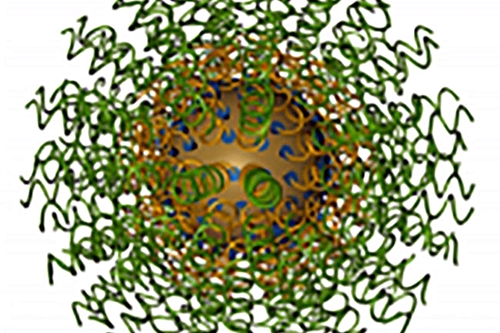26 July 2016. Biomedical engineers developed a hydrogel patch with three types of therapy applied directly to tumors in the colon, which in lab mice caused cancer to go into remission. The team led by Natalie Artzi, a research scientist at Massachusetts Institute of Technology and Brigham and Women’s Hospital in Boston, published its findings in yesterday’s issue of the journal Nature Materials (paid subscription required).
According to the American Cancer Society, colorectal cancer is the third most common form of cancer, when skin cancers are excluded, affecting 1 in 21 men and 1 in 23 women in the U.S. More than 95,000 new cases of colon cancer are expected to occur in 2016, along with more than 39,000 rectal cases.
Artzi and colleagues are seeking a more reliable technique for treating this form of cancer. The standard of care today uses chemotherapy, a systemic treatment, which while helpful in many cases, often results in only a small proportion of the administered drug actually reaching the tumor, as well as causing well-documented adverse side effects.
Using nanoparticles to deliver the chemotherapy doesn’t by itself solve the targeting problem. The authors cite data showing in lab mice less than 1 percent of nanoparticles given systemically reach the target tumors. “That is what prompted us to think a little bit differently,” says Artzi in a university statement, “to look at how we can leverage advancements in materials science, and in particular nanotechnology, to treat the primary tumor in a local and sustained manner.”
The researchers’ solution is a patch made of hydrogel, natural materials made largely of water, but with polymer to provide substance and structure, applied directly to the tumor site. The patch contains a chemotherapy drug, but also gold nanorods, which when exposed to near-infrared radiation, warms up to release the chemotherapy drug into the tumor. Radiating the gold nanorods also applies heat directly to the tumor, which helps destroy the cancer cells.
In addition, the team packs the hydrogel patch with gold nanoparticles containing short interfering RNA molecules, nucleic acids coded to silence the activity of specific genes. In this case, the short interfering RNA targets the Kras oncogene, or cancer-causing gene, associated with 30 to 50 percent of colorectal cancer cases.
The researchers tested the patch in mice induced with colon cancer. When applied directly to the tumor, the patch alone was sufficient to destroy it and cause the cancer to go into remission. In another set of mice, the patch was applied to the colon after the tumor was removed, which prevented recurrence of the cancer. In a comparable group of mice, tumors were removed but the patch was not used, and in 40 percent of those cases, cancer returned.
The team plans to test the patch next with larger lab animals, which offers an opportunity to design minimally invasive methods for applying the patch. “This administration modality would enable, at least in early-stage cancer patients, the avoidance of open field surgery and colon resection,” notes Artzi. “Local application of the triple therapy could thus improve patients’ quality of life and therapeutic outcome.”
Read more:
- Radiation Enhances Nanoparticle Cancer Treatments
- Implanted Device Delivers Pancreatic Cancer Drugs
- Microneedle Patch Delivers Melanoma Immunotherapy
- Nanoparticles Shown to Target Tumors, Avoid Adjacent Cells
- Injected Drug Forms Anti-Cancer Nanoparticles in Tumors
* * *


 RSS - Posts
RSS - Posts
[…] Patch Delivers Gene, Drug, Heat Therapies to Colon Tumors […]
[…] Patch Delivers Gene, Drug, Heat Therapies to Colon Tumors […]
[…] Patch Delivers Gene, Drug, Heat Therapies to Colon Tumors […]